By Presleigh Johnson
Public History is everywhere. Whether it’s signs all over St. Augustine, reenactments, or surf culture exhibits, the Oldest City is a treasure trove of history. Being a Flagler College student is one of the best ways to learn about the St. Augustine community.
Just a few weeks ago, my mom found a Marineland postcard packet for me at a flea market in Central Texas. It’s fascinating to think that postcards representing our travel memories make their way around the country and the world. It’s also fascinating how sending postcards today seem like a dying art, especially in the increasingly digital age of social media.
Vintage postcards of dolphin tricks ended up approximately 1,037 miles from Marineland for my mom to purchase for five dollars. Postcards are keepsakes that preserve our own memories, but generations later, they inform public historians about why our memories mattered.
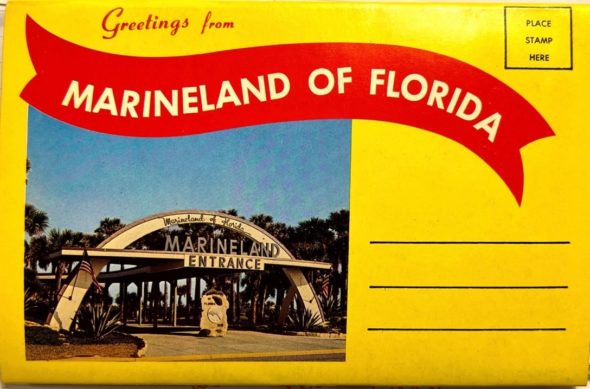
Someone probably half a century ago bought the postcards because Marineland was unique enough to remember or share with family and friends back home. The postcard packet I have shows dolphins doing feeding tricks and a whale having his teeth brushed by a staff member dressed as a doctor.
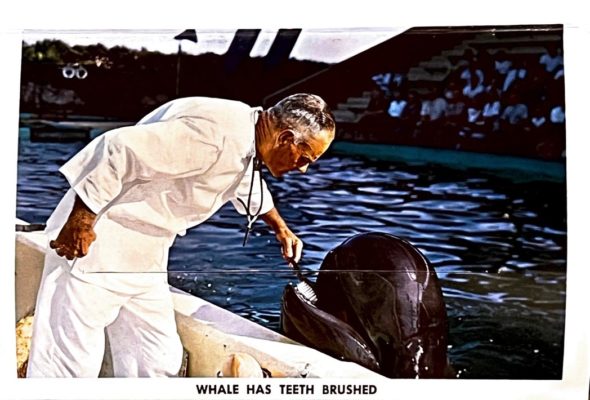
These images might make you think Marineland is an ordinary Florida roadside attraction, but their history shows it’s so much more than that. It’s been a leader in the film industry, a center for marine science, and animal training. Most of all, Marineland remains an ambassador of Floridian culture to the rest of the country.
Just south of St. Augustine on A1A, Marine Studios opened in June 1938 to serve as a location for underwater filming. That December, First Lady Eleanor Roosevelt visited, enjoying her experience enough to include it in her “My Day” column. She described two giant tanks filled with thousands of marine species and seeing a mother and baby dolphin swim together.
From Marine Circus (1939) to Benji Takes a Dive (1981), there was no shortage of underwater productions filmed at Marineland. You can’t forget about Revenge of the Creature (1955), the well-known sci-fi/horror sequel filmed at the studio. Marineland became a leading location to study underwater technology while simultaneously attracting a sea of Florida tourists.
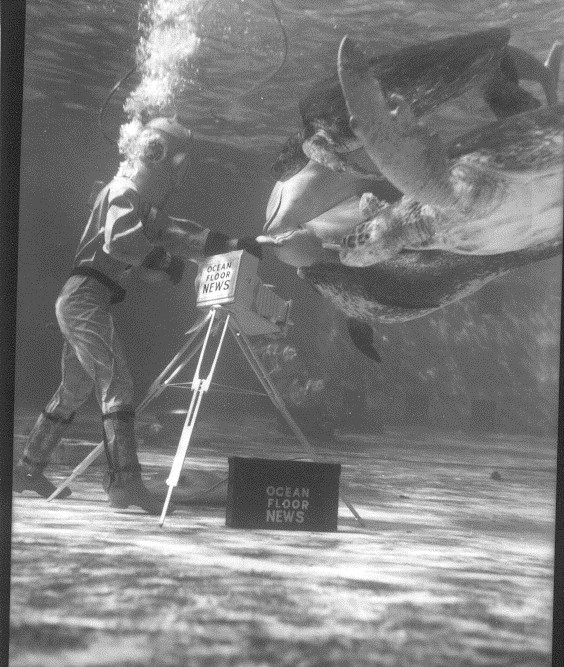
By the 1950s and 1960s, Marineland was an “Oceanarium”—the setting for public dolphin feedings that soon turned into elaborate entertainment shows. There was Flippy the bottlenose dolphin, dogs wearing tutus on surfboards, and varying levels of jumping tricks for synchronized dolphins.

Born in 1953, Nellie was the most popular dolphin. She became the spokesdolphin for Marineland and Timex (didn’t know watch companies could have spokesdolphins?). She was even awarded an honorary degree from Jacksonville University and became (still is!) the university’s mascot. If Marineland was the ambassador for Florida tourism, then Nellie was Marineland’s personal ambassador. Known for her intelligence and extraordinary skill, she died in 2014, living 61 years, the longest lifespan of a dolphin cared for by humans.

The magic of Marineland attracted more than just everyday tourists. Writers, first ladies, and film-makers were just some of Marineland’s notable guests. Ernest Hemingway and his second wife, Martha Gellhorn, shared dinner and drinks together in the Dolphin Restaurant with Marjorie Kinnan Rawlings and her husband, Norton S. Baskin. I wonder what Hemingway thought about Marineland as he shared drinks with a fellow writer? What would their conversations have been like?
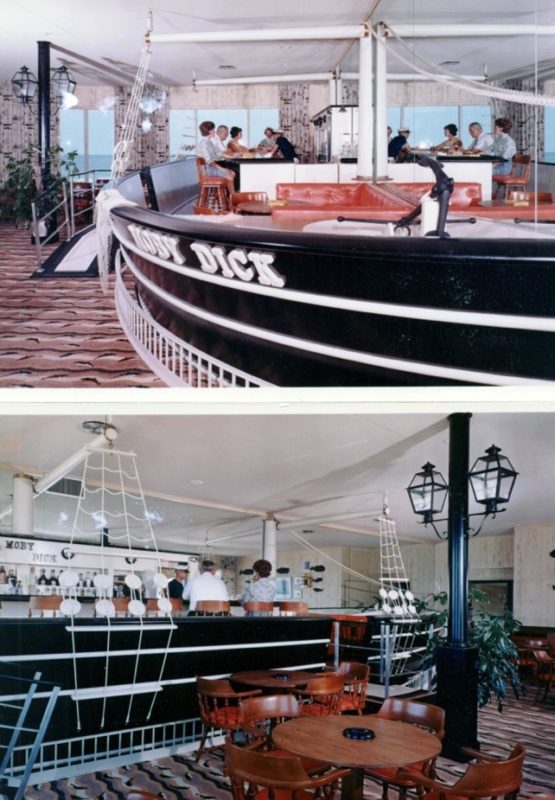
In keeping with the literary theme, there was the ship-themed “Moby Dick Lounge” as well as other restaurants on property. To accommodate the site’s growing popularity, Marineland incorporated a campground and hotels, catering to different ages and demographics of tourists.

Marineland was now the cultural capital of dolphin experiences in Florida. In 1986, it was recognized on the National Register of Historic Places. Still open to the public, Marineland today remains a Florida icon but also seeks to preserve a heritage so central to the state’s identity.
“Marineland’s history is a fascinating and important, but lesser known, component of St. Augustine’s history. As committed as our city is to telling its stories and keeping its history alive, Marineland is striving to do the same,” says Terran McGinnis, Marineland’s Facility Historian and Manager of Community Development.
“Whether it’s the history of film making, Florida tourism, architecture, celebrities, marine science, animal training, or conservation, Marineland is a unique and important part of the story of this community,” McGinnis continues, “We have both guided, and been guided by, the local citizens for over 84 years and we are endlessly grateful to be at home in a city that embraces history as such an important part of its identity.”
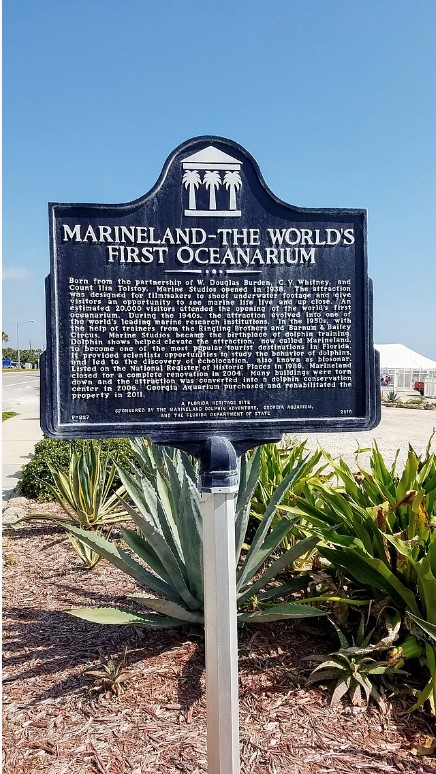
For me personally, Marineland is more than just a fun packet of postcards—it’s a cultural legacy that continues. Many students at Flagler College have interned for the Digital Humanities Project to digitize Marineland’s archival collection, bringing public access to one of Florida’s most fascinating historic sites. Their project has generated fun class conversation as well as interest from the local community.
Marineland serves as an exploration into the possibilities of marine life, film technology, and Florida innovation. After all, what better way is there to experience the Sunshine State than to learn from marine species in our coastal community? Just the five-dollar postcard packet my mom purchased opened up a world of Florida history, becoming a fun avenue to relive the past.
Click here to learn more about Marineland’s history.
Explore “Diving into Marineland” Digital Humanities Project to see other fun photos of Marineland.




Be the first to comment on "More than a Postcard: Greetings from Marineland, Florida"